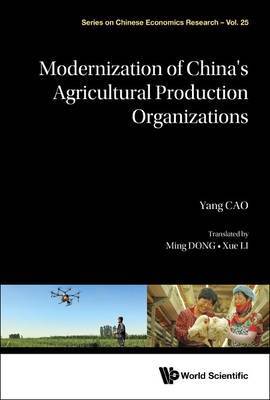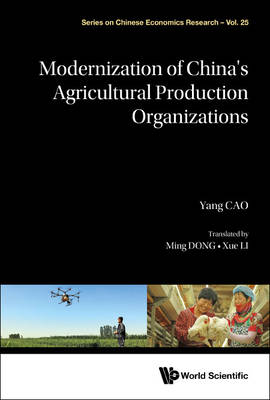
Door een staking bij bpost kan je online bestelling op dit moment iets langer onderweg zijn dan voorzien. Dringend iets nodig? Onze winkels ontvangen jou met open armen!
- Afhalen na 1 uur in een winkel met voorraad
- Gratis thuislevering in België vanaf € 30
- Ruim aanbod met 7 miljoen producten
Door een staking bij bpost kan je online bestelling op dit moment iets langer onderweg zijn dan voorzien. Dringend iets nodig? Onze winkels ontvangen jou met open armen!
- Afhalen na 1 uur in een winkel met voorraad
- Gratis thuislevering in België vanaf € 30
- Ruim aanbod met 7 miljoen producten
Zoeken
Omschrijving
This book constructs a new theoretical framework for understanding contemporary Chinese agricultural production organizations from the perspective of promoting farmers' realization of 'substantial freedom' and 'feasible ability'. The new theoretical framework deepens and expands the theory of agricultural modernization and production organizations. The book discusses the 'multi-symbiosis' pattern of agricultural production organizations in contemporary China from macro and micro economics perspectives. Based on the peasant household economy, this multi-symbiosis organizational structure co-exists and interweaves with various forms of economic organizations. The book points out that this multi-symbiosis organizational structure is the result of free choice of the majority of farmers since the 'reform' and 'opening-up'; in turn, it also provides a broader organizational and institutional space for farmers' diversified choices. The book predicts that China's agricultural production organization networking will gradually move towards networking based on diversification and also form networked organization groups.
Specificaties
Betrokkenen
- Auteur(s):
- Uitgeverij:
Inhoud
- Aantal bladzijden:
- 560
- Taal:
- Engels
- Reeks:
Eigenschappen
- Productcode (EAN):
- 9789811242267
- Verschijningsdatum:
- 14/04/2023
- Uitvoering:
- Hardcover
- Formaat:
- Genaaid
- Afmetingen:
- 152 mm x 229 mm
- Gewicht:
- 916 g

Alleen bij Standaard Boekhandel
+ 515 punten op je klantenkaart van Standaard Boekhandel
Beoordelingen
We publiceren alleen reviews die voldoen aan de voorwaarden voor reviews. Bekijk onze voorwaarden voor reviews.











